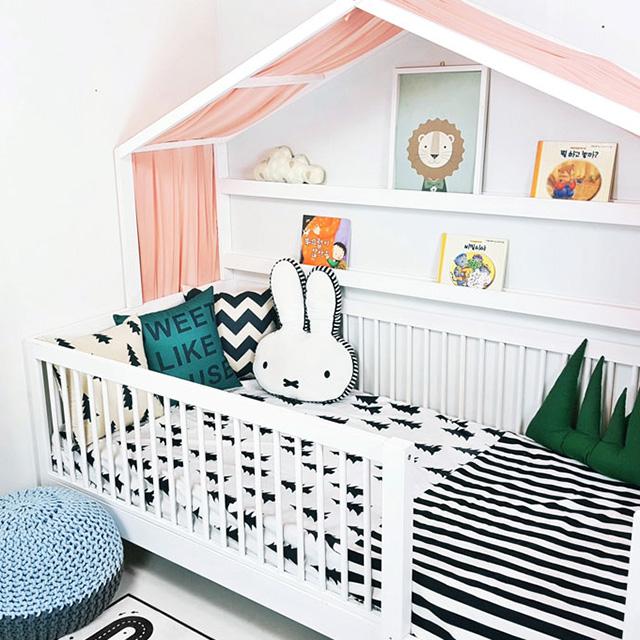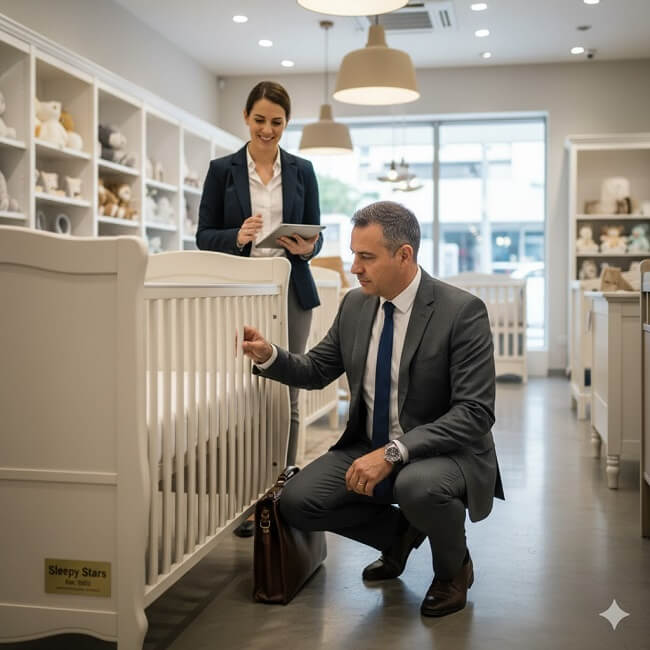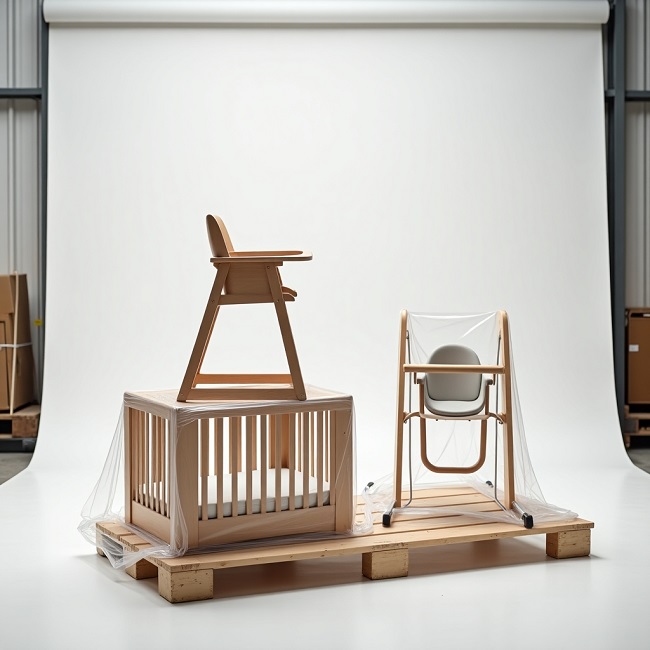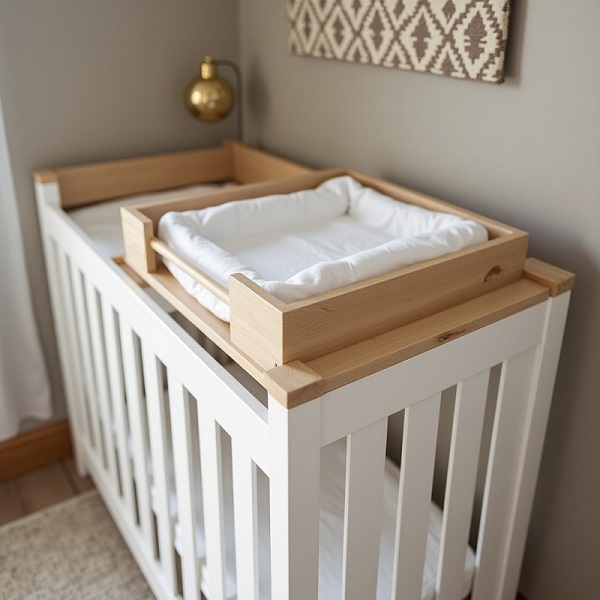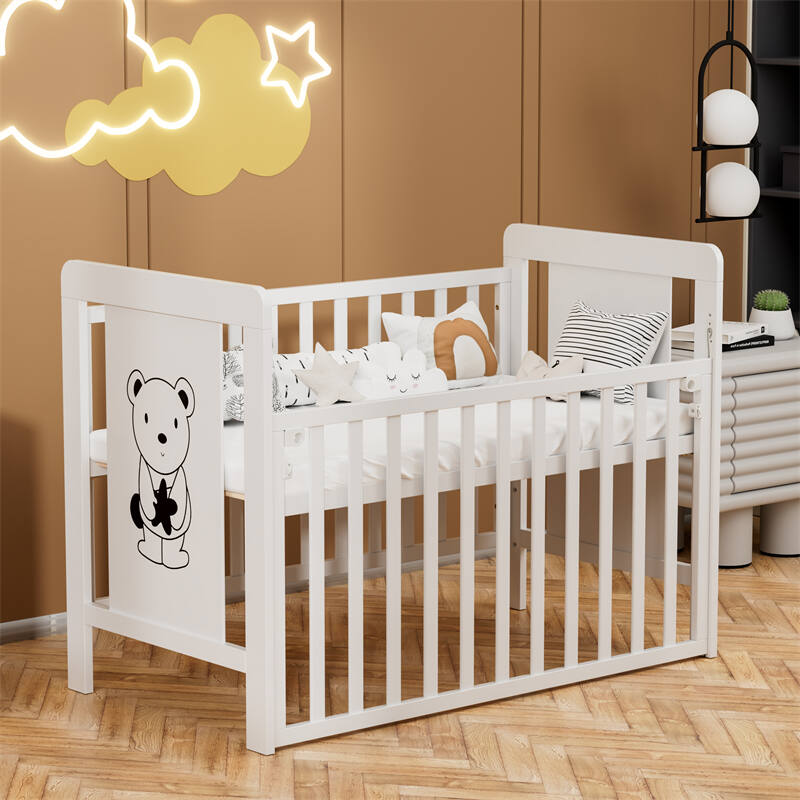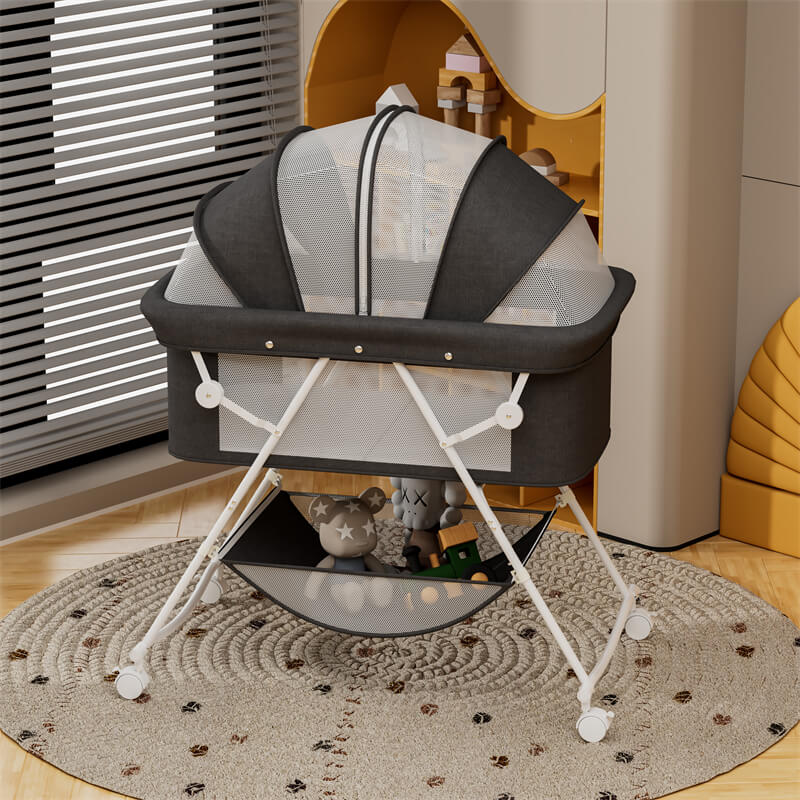When children transition from infancy to toddlerhood, many parents face a seemingly simple yet complex question: What kind of bed should they choose for their child? Should they move directly to a traditional toddler bed, or try the floor bed that has gained widespread praise in recent years?
A friend’s three-year-old daughter woke up from her small floor bed, rubbed her eyes, climbed out of bed skillfully, picked up the stuffed bear next to her, and staggered to the living room.
Another neighbor’s child of the same age still sleeps in a toddler bed with a fence and needs to be carried out by his parents every morning.
These two completely different scenes just reflect how the choice of parenting style subtly affects the growth rhythm of children.
In this blog, we’ll take an objective look at the advantages and disadvantages of both options, incorporate expert recommendations from pediatricians, and consider the unique needs of different families to help you choose the best solution for your child.
What Are Floor Beds and Toddler Beds?
Floor Bed
A floor bed is exactly what it sounds like—a mattress or low-profile bed frame set directly on the floor. But its connotation is much deeper. This design, which originated from Montessori education, gives the child the right to choose.
Supporters believe that this low and open structure helps to cultivate children’s spatial awareness and autonomy, allowing them to get up and move at their own pace.
When the morning sun shines through the curtains, your little one opens his eyes and can decide whether to lie down for a while or start exploring the world without crying for his mother. This autonomy brings not only convenience, but also a subtle trust – we believe that children have the ability to manage their own range of activities.
Toddler Bed
A toddler bed is a transitional bed designed specifically for children. Its typical features include: a height of about 20 inches from the ground, a semi-enclosed guardrail, and an opening design for easy entry and exit. This structure gives children more freedom than a crib, but it is not as “permissive” as a floor bed.
The advantage of this type of bed is that it can effectively prevent accidental falls during sleep, especially for active children. Research from the British Child Safety Association shows that appropriate fence protection can significantly reduce the incidence of sleep accidents in children aged 18-36 months.
Ideal Age for a Floor Bed vs a Toddler Bed
Ideal Age for Using Floor Beds
The applicable age for floor beds is relatively flexible, but it is usually recommended to introduce them after the child has basic crawling ability, which is about 8-12 months. Children at this stage begin to develop spatial cognitive ability, and low floor beds allow them to safely explore the autonomy of “getting up” and “going to bed”.
However, it is worth noting that Montessori education experts generally recommend that floor beds are best used between 18 months and 3 years old, when children have certain self-care abilities and are in a critical period of independent development.
The American Academy of Pediatrics reminds that using floor beds too early (earlier than 6 months) may pose safety hazards, and this sleeping method is not recommended for infants.
Ideal Age for Using Toddler Beds
Toddler beds serve as an ideal transition, typically best suited for children between 1.5 and 4 years of age. Children at this stage are already able to stand and walk independently, but their balance ability is still developing. The semi-fenced design of toddler beds provides necessary protection for children during their active period.
According to a survey by the British Sleep Research Association, the probability of 2-3-year-old children falling from a bed with guardrails is about 65% lower than that of an ordinary bed.
It is worth noting that when a child’s height exceeds 35 inches or can easily climb over the guardrail, it is time to consider replacing a larger child’s bed.
Consider the Child’s Psychological Development
From the perspective of developmental psychology, 1-2 years old is the critical period for cultivating secure attachment, and 2-3 years old is the golden stage for independent development. The timing of choosing these two types of beds should be coordinated with the child’s psychological development needs.
For example, for children with more obvious separation anxiety, using a floor bed too early may aggravate anxiety. For children with a strong desire to explore, transitioning from a crib to a toddler bed too late may limit their autonomous development.
Which Is Safer: Floor Bed or Toddler Bed?
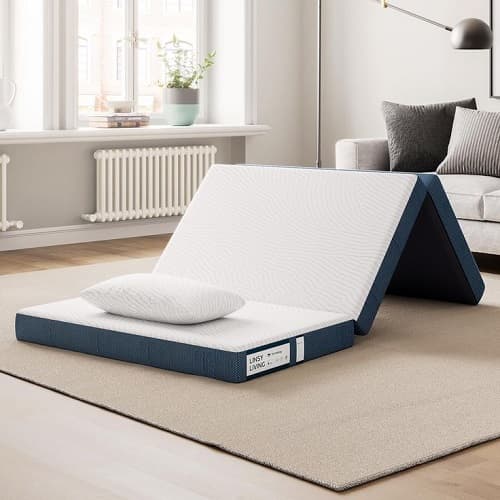
From the perspective of fall prevention, toddler beds are obviously more advantageous. Its height of about 20 inches from the ground, combined with protective fences, can effectively prevent tumbling and falling in sleep.
According to the American Academy of Pediatrics, toddler beds equipped with guardrails can reduce sleep-related falls by approximately 70%. This protection is especially necessary for active toddlers aged 18-30 months.
However, it is worth noting that when a child is over 35 inches tall, the guardrail may become a new safety hazard – they may try to climb over and fall from a higher place.
The biggest safety advantage of a floor bed is its “zero drop” design. Even if a child rolls down, a drop of less than 8 inches will hardly cause harm.
A 2021 research report by the Japanese Pediatric Association pointed out that the incidence of severe trauma in infant and toddler injury accidents caused by floor beds is only 1/3 of that of traditional toddler beds. But this also means that parents must take full house safety precautions, including:
- Power socket protection
- Furniture corner anti-collision
- Dangerous goods storage
- Door and window safety locks
In terms of suffocation risks, both types of beds require special attention to the selection of bedding. The European Child Safety Alliance specifically reminds that no matter which type of bed is chosen, overly soft mattresses and heavy quilts should be avoided, especially for children under 3 years old.
Which Bed Promotes Independence and Development?
Child development experts generally believe that 1-3 years old is the key window period for cultivating independence, and the design of the sleeping environment plays an important role in this.
Floor beds believe in the design concept of “autonomous entry and exit” and show obvious advantages in cultivating autonomy. Montessori education research shows that toddlers using floor beds establish regular work and rest habits 4-6 months earlier than toddlers using fence beds on average. This open sleeping environment allows children to:
- Decide their own bedtime and wake-up time
- Explore their sleeping area freely
- Develop a sense of spatial boundaries
- Establish an internal work and rest routine
Harvard University’s Child Development Research Center points out that this early experience of autonomy helps to cultivate children’s sense of self-efficacy, and this “I can do it” belief will extend to other areas of life.
Toddler beds cultivate independence through “limited freedom”. Its semi-open design not only gives children a certain amount of autonomy but also sets clear behavioral boundaries. This type of bed is more suitable for:
- Children who need clear work and rest boundaries
- Children who are sensitive to space transitions
- The transition period of initial independent sleep training
From the perspective of neurodevelopment, both types of beds have their advantages and disadvantages. The free exploration opportunities provided by the floor bed can stimulate the development of vestibular and proprioceptive senses, while the structured environment of the toddler bed is more conducive to the establishment of a sense of security.
Research by the Anna Freud Center, a child psychotherapist, shows that children around the age of 2 need to balance exploration and protection, and over-emphasizing either side may affect psychological development. The most important thing in practice is to observe the individual reactions of children.
How to Choose Between a Floor Bed and a Toddler Bed?
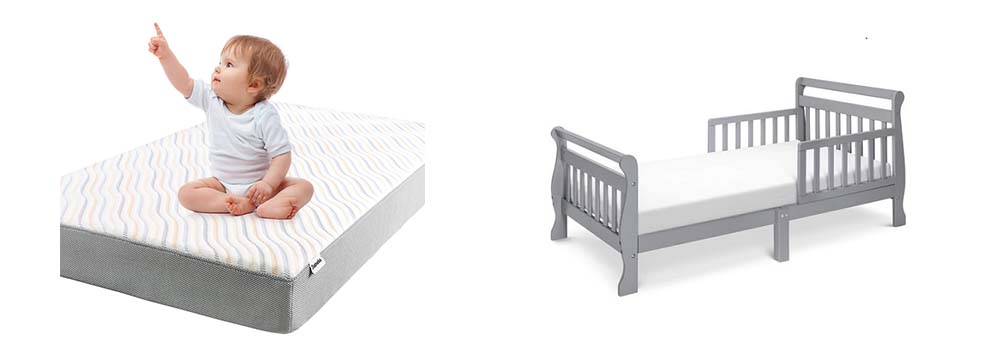
Assess Your Child’s Personality Traits
Children who are active and adaptable tend to adapt more quickly to the free environment of a floor bed, while children who are more cautious or have irregular sleep patterns may need the safety boundaries provided by a toddler bed. It is important to observe your child’s daily behavior patterns – do they like to explore independently? How adaptable are they to changes in space? These observations can provide important references for selection.
Consider the Living Environment
Room conditions are often the most realistic constraints. If the child’s room has been fully protected (including power protection, furniture fixing, etc.), a floor bed would be a good choice. On the contrary, if there are potential safety hazards in the room, the physical protection provided by the toddler bed becomes more important.
Space considerations also play a role. Floor beds typically require at least 32 square feet of safe play area, while a toddler bed usually needs about 16 square feet of clear space.
Economic Factors and Long-Term Use Value
As a transitional product, toddler beds have a shorter use time, while floor beds can be used until school age. However, the latter requires additional investment in room safety renovation, and these costs should be taken into consideration.
What Do Pediatricians & Sleep Experts Recommend?
In terms of safety, the American Academy of Pediatrics has established clear medical standards. Their research shows that the sleeping environment of children aged 1-3 years old needs to pay special attention to anti-fall protection, and it is recommended that the height of the edge of the bed from the ground should be controlled within 22 inches. This height range can prevent serious fall injuries without excessively restricting the child’s freedom of movement.
Sleep medicine experts particularly emphasize the importance of mattress hardness. Clinical data show that mattresses of moderate hardness can significantly reduce the incidence of sleep accidents in infants and young children.
From the perspective of child development, 18-24 months is an important transition period. Children at this stage begin to develop autonomous awareness, but their motor coordination is not yet perfect. Transitional beds with semi-fences are often the best choice. During the 2-3 years 3-year-old period, as children’s motor skills improve, a more open sleeping environment can be gradually considered.
It is worth noting that the research team at Stanford University found that the quality of sleep of young children is closely related to the sense of safety of the environment, which means that while cultivating independence, it is necessary to ensure that children have enough sense of security.
FAQ
Are floor beds better than toddler beds?
It depends on your parenting style and your child’s needs. Floor beds encourage independence and freedom of movement, while toddler beds offer more structure and guardrails for safety. There’s no one-size-fits-all answer—both have their benefits.
Do toddler beds need special mattresses?
Most toddler beds use a standard crib mattress, so you don’t need to buy anything new if you’re transitioning from a crib.
Can I use a mattress directly on the floor?
Yes, many parents do. Just make sure there’s good ventilation underneath to prevent moisture buildup, especially if you live in a humid area. You can also use a low platform or slatted base to help with airflow.
How do I childproof a room for a floor bed?
Anchor furniture to the wall, cover outlets, keep cords out of reach, and remove anything sharp or breakable. A baby gate at the door can help if your child wakes and wanders.
Conclusion
After a comprehensive analysis of floor beds and toddler beds, we can clearly see that these two sleeping solutions each have their own unique value and applicable scenarios.
From a professional perspective, the most significant advantage of floor beds is that they promote the development of children’s autonomy. Montessori education research and child development observations have confirmed that this open environment helps to cultivate the self-management ability and spatial awareness of children over 1.5 years old.
Toddler beds provide a more compromise solution. Its semi-fenced design gives children moderate freedom of movement while providing necessary safety protection, which is particularly suitable for the transition period from 18 months to 3 years old.
It should be emphasized that this choice does not have to be permanent. Children’s growth is full of variables, and wise parents will maintain flexibility in adjustment.
Recommended Related Articles:

